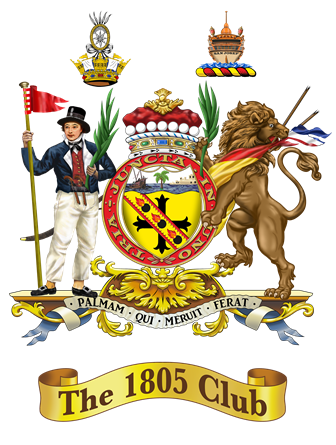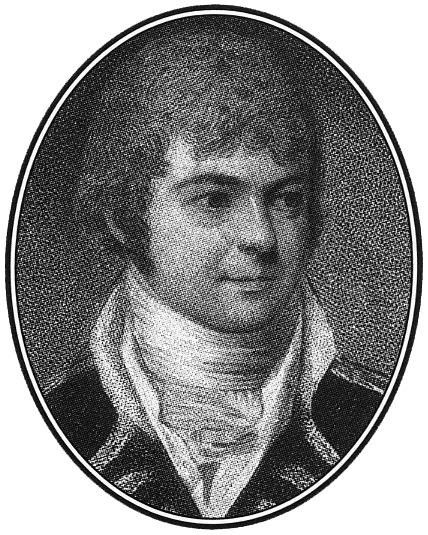The 1805 Club uses cookies to ensure you have the best possible online experience. By continuing to use this site you consent to the use of cookies in accordance with our cookie policy.
Thomas Fremantle first served under Nelson at the siege of Bastia in 1794, when in command of hms Tartar (28), and became a close friend and colleague. Their friendship continued until the day of Nelson’s death at Trafalgar, when Fremantle was close astern of the Victory in the battleship hms Neptune. When Nelson died, he lost a friend who, as he told his wife, ‘appreciated my Abilities and Zeal’.
His ability was noted early by Nelson, and was confirmed with the taking of the Ca Ira (80) in Hotham’s action in March 1795. The Frenchman had lost some rigging in a collision, so Fremantle brought his little frigate hms Inconstant (36) under her stern and put in two broadsides, but sustained damage himself until Nelson in hms Agamemnon (64) arrived to his rescue.
In the following months, Nelson and Fremantle saw plenty of action together along the Italian coast. They supported the Austrian army, captured French ships at Langueglia and Alassio in 1795, and evacuated British merchants to Corsica, and took Elba in 1796. Fremantle was in Nelson’s barge in the fight against the Spanish gunboats at Cadiz in June 1797, and they landed together at Santa Cruz de Tenerife in July 1797, where they were both badly wounded in the arm. They took passage home in Fremantle’s ship hms Seahorse (38), nursed by Fremantle’s new wife, Betsey, to whom Nelson wrote his first note with his left hand. Although Fremantle’s arm was saved, he never recovered the full use of it.
Fremantle had met Betsey in 1796, when he rescued her family, the Wynnes, from the advancing French armies at Leghorn in 1796. Betsey was eighteen, Catholic, and an heiress; Tom was thirty-one, Protestant, and poor. She had to ward off the attentions of another of Nelson’s friends, Thomas Foley, ‘that grey headed gallant’, but her love for Fremantle triumphed, and they were eventually married in Lady Hamilton’s drawing room in Naples. Prince Augustus, youngest son of George III, gave away the bride.
Betsey described her husband as ‘good natured, kind, amiable, lively, with qualities to win everyone’s heart the first moment one sees him’. He was also ‘short, stocky, not handsome, but with fiery black eyes which are quite captivating’. His letters home to Betsey are a delight to read, but to his men he was a strict disciplinarian, who imposed high standards. He introduced petty courts of enquiry for defaulters; a measure adopted sixty years later by the Royal Navy.
Fremantle served in Nelson’s attacking squadron at Copenhagen in 1801, commanding hms Ganges (74), where he distinguished himself in a hard-fought battle. He was back in the Ganges in 1803 fulfilling the Navy’s main function of preventing Napoleon’s planned invasion, stationed off south-west Ireland and enduring gales and desertions. He then moved to blockade Ferrol until the end of 1804, when his ship was paid off. He took command of hms Neptune (98) in May 1805, and was then diverted south to assist in the blockade of the Combined Fleet in Cadiz.
The next two months of patrolling off Cadiz seemed interminable and, writing to Betsey, Fremantle thought they would be ‘here ’til doomsday!’ He was invigorated by the arrival of Nelson, and the ‘flattering’ allocation of his ‘Old Station as his Second’. This meant frequent visits to hms Victory.
At Trafalgar, the Neptune was the third ship in Nelson’s line. Fremantle first engaged the Bucentaure as he passed under her stern and then, having carefully placed his ship on the quarter of the massive Santissima Trinidad (130), held his position and engaged her in a long gunnery duel: a feat reported by Midshipman Robinson as ‘the most seamanlike act I witnessed that day.’ Although other ships assisted him, he always claimed that she surrendered to him. During the storm, desperate attempts were made to save the massive Spanish ship, but eventually she had to be scuttled after her crew had been saved. Before she sank, Fremantle took the fittings from her chapel to adorn his home church at Swanbourne. He towed hms Victory to Gibraltar, and employed Villeneuve’s flag captain, Magendie, to draw a plan of the battle for posterity. A year later, he returned home to become a Lord of the Admiralty, and MP for Sandwich.
Promoted rear admiral in 1810, he took command in the Adriatic until the end of the Napoleonic Wars. Fiume, Trieste and every place on the coasts of Dalmatia, Croatia, Istria and Friuli surrendered to his squadron, and almost 800 vessels and a thousand guns were taken or destroyed. For these services, he was made a KCB and a Baron of the Austrian States in 1815, rising to GCB in 1818. In 1819, he was promoted vice admiral and appointed Commander-in-Chief Mediterranean. But he did not enjoy his fortune long, for he died suddenly in December 1819. He was buried in Naples with full military honours by order of the King of Naples. His obituary stated that ‘few men possessed a more kind and generous heart.’
CAF
Memorials
Type: Grave
Location: Naples
Click here to read more…
Type: Monument
Material: Stone
Location: SE corner of the Upper Barracca Garden, Valletta, Malta
Click here to read more…
The Chairman's Dispatch
Regular updates from The 1805 Club’s Chairman. See the archive.
Topmen
To find out more and to become a Topman, please click here.
Membership Leaflet
See why others have joined our international membership. Join today! A Membership Leaflet is available for you to print out.
Admiral Lord Nelson
Visit Admiral Lord Nelson's own blog www.admiralnelson.org.
New Links





